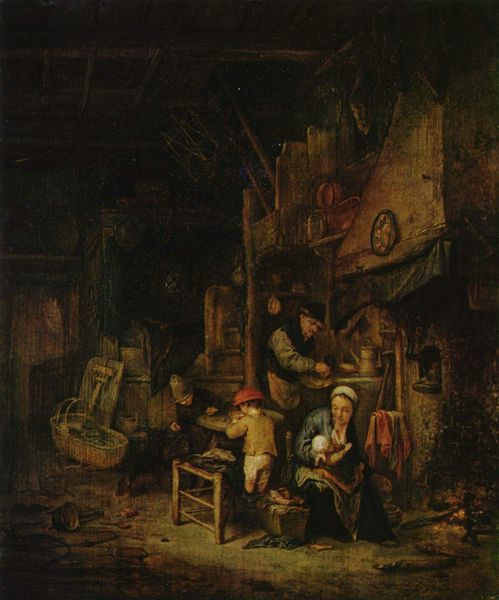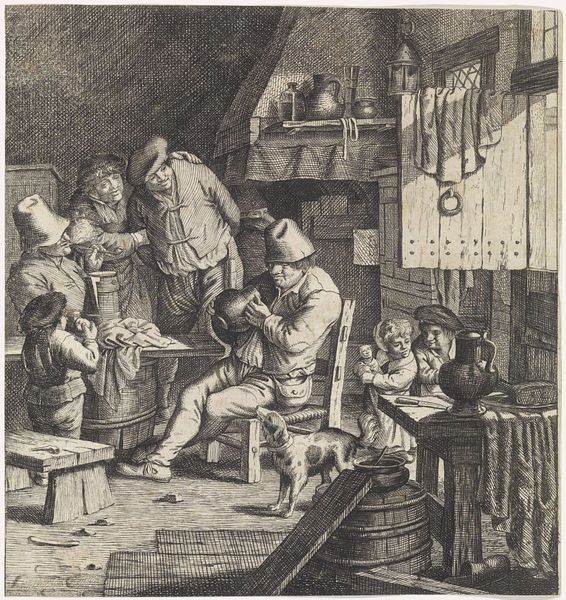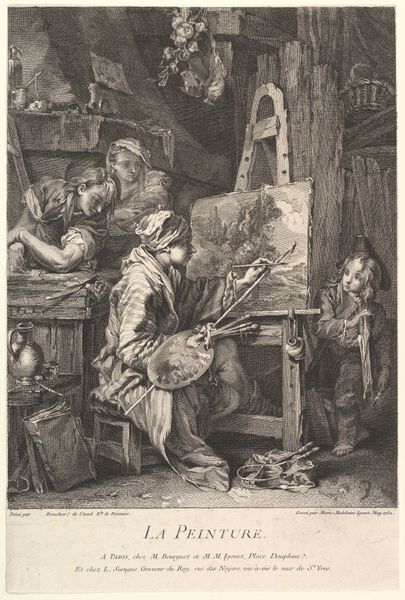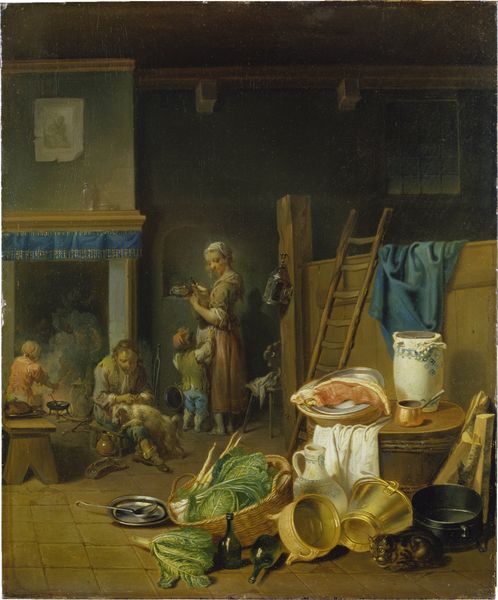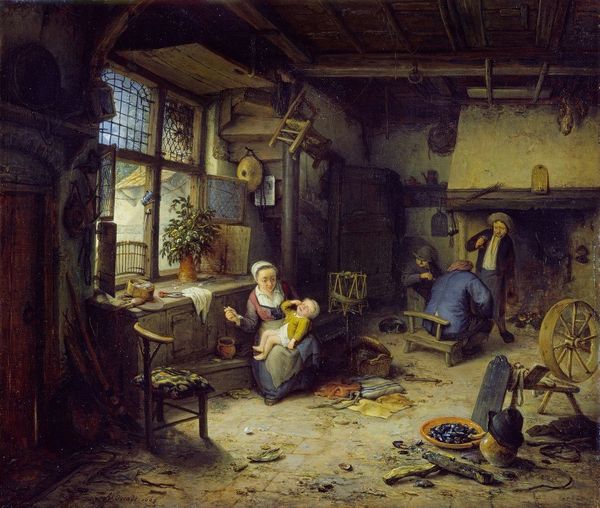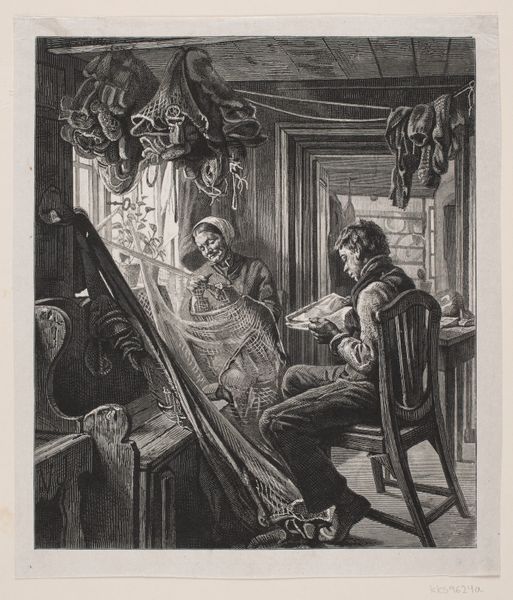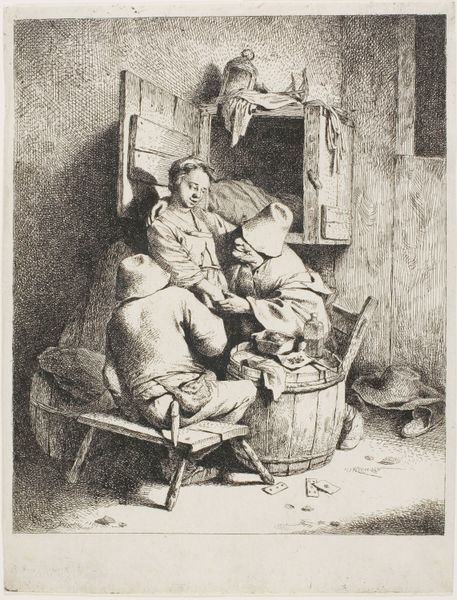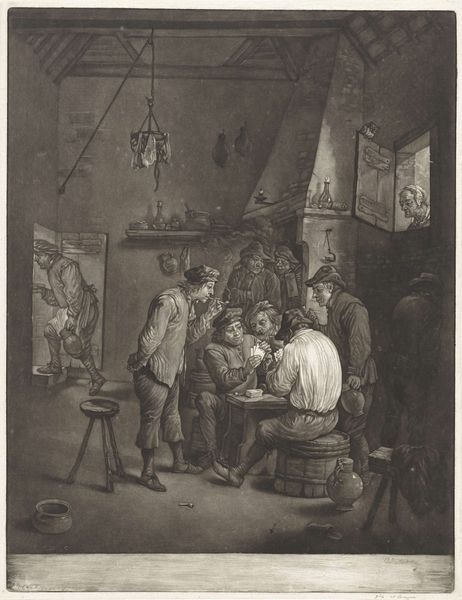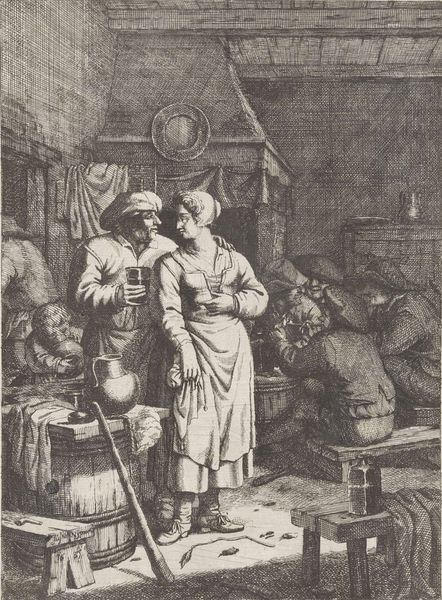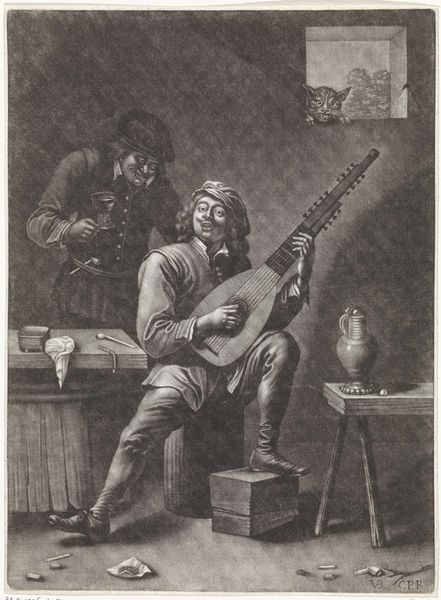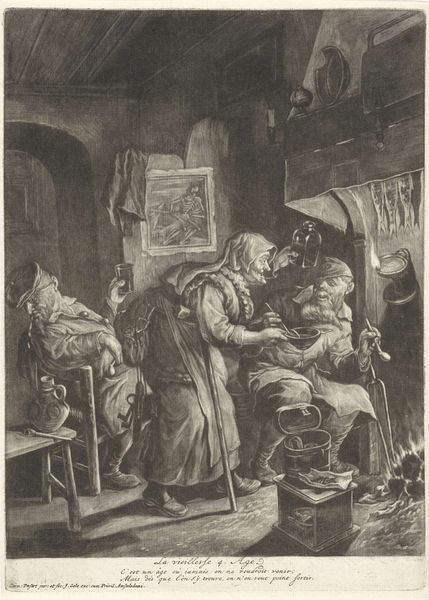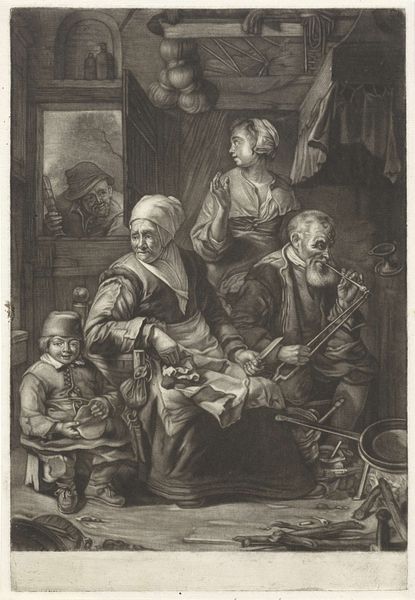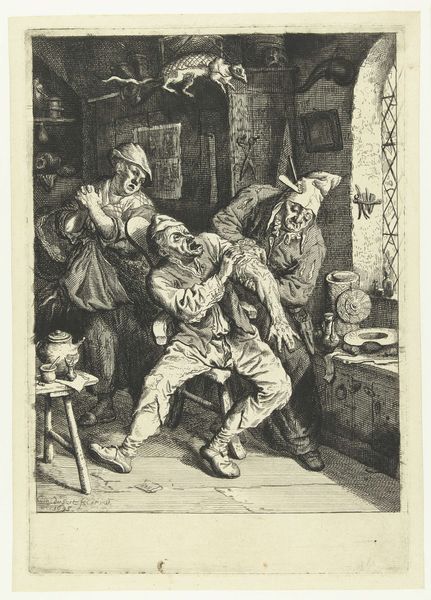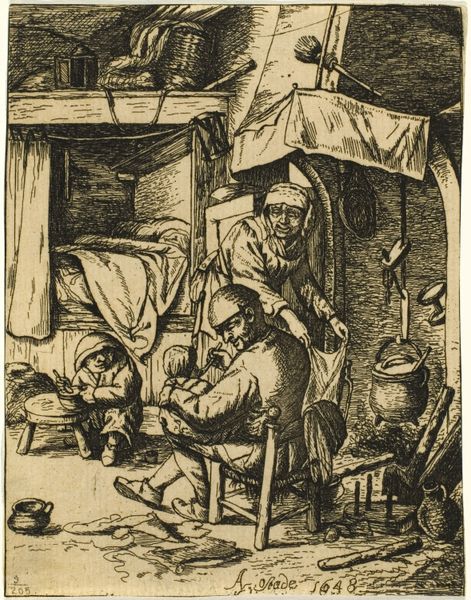
Copyright: Public domain
Curator: Pavel Fedotov painted “The Fresh Cavalier” in 1846. The artwork now resides in the Tretyakov Gallery in Moscow, created using oil paint. Editor: It's rather cramped, isn’t it? And chaotic! It evokes this immediate sense of disarray and almost satirical pride—like a scene caught mid-performance. Curator: Precisely. Look at the details – the discarded playing cards on the floor, the cluttered table, the guitar. It reveals much about the material circumstances of this ‘fresh cavalier.’ This isn't opulent aristocracy; it's aspirational, perhaps even a touch pathetic. Editor: And the positioning of the characters – the disheveled officer juxtaposed with the woman holding a cook pot. There is an intense class dynamic that hints at broader socio-economic realities in Russia at the time, doesn't it? Fedotov uses this setting as a stage. What are your thoughts about the materials used, I am curious to understand if they inform this socio-political scenario. Curator: Certainly. The oil paints used afford a certain richness, but it’s a feigned richness. It's a tangible surface capturing a story of aspiration painted, literally, onto a relatively humble support. There is an ironic distance, for instance, when one considers that oil paint became widely accessible because of industrialized production. Editor: Industrialized production enabling social mobility or the appearance of it! Fedotov is not simply painting a portrait but making a pointed commentary on class, ambition, and societal roles. One almost senses his critique, his challenging of established hierarchies woven into the brushstrokes themselves. Curator: That's right. We get a look at the means by which one defines social position: the cheap materials posing as luxury, all accessible through labor, markets and a nascent form of what would become modern consumerism. Editor: Fedotov shows the mechanisms of this constructed persona – gender, labor, consumption. Fascinating! He's not just an observer but an analyst of society in that he shows the performative nature of identity, where one’s worth is negotiated through available commodities. Curator: Indeed. I would encourage one to look at "The Fresh Cavalier" as a story of materials, made with the aim to explore their cultural worth. Editor: This picture captures something about our desire to belong and that persistent unease about authenticity, race, gender and identity, about the very price of recognition. I wonder if such realities and discussions of social identity through material objects have really changed since the artist first brushed these paints in 1846.
Comments
No comments
Be the first to comment and join the conversation on the ultimate creative platform.
